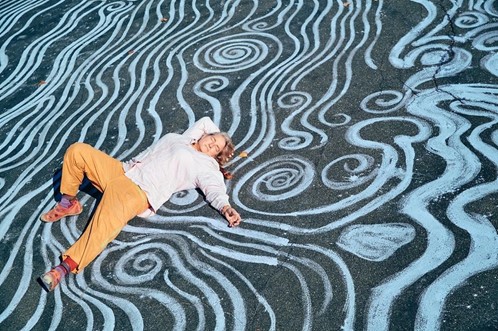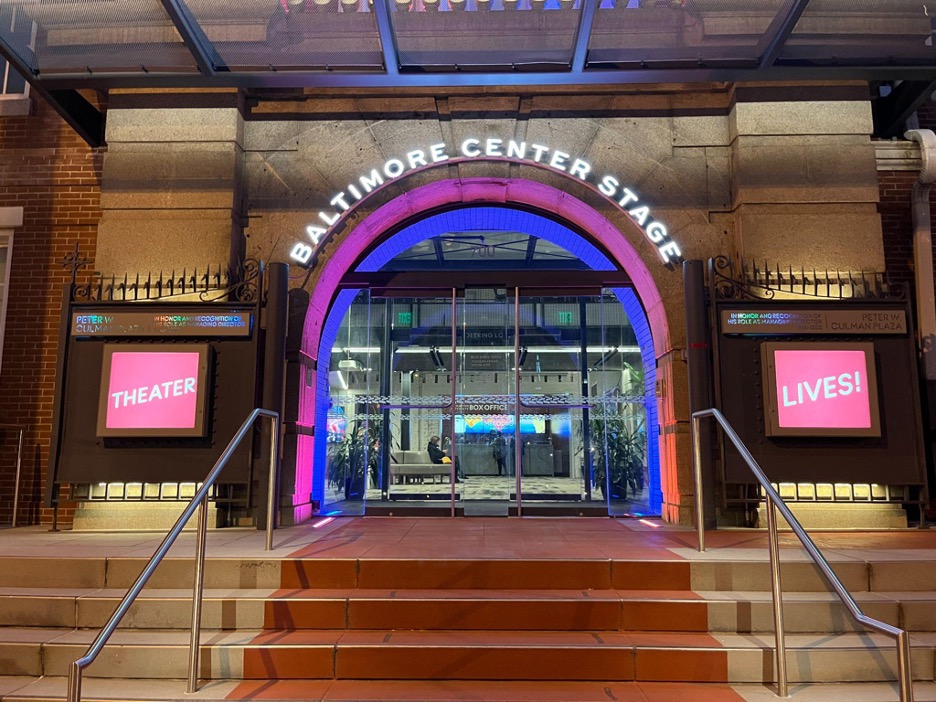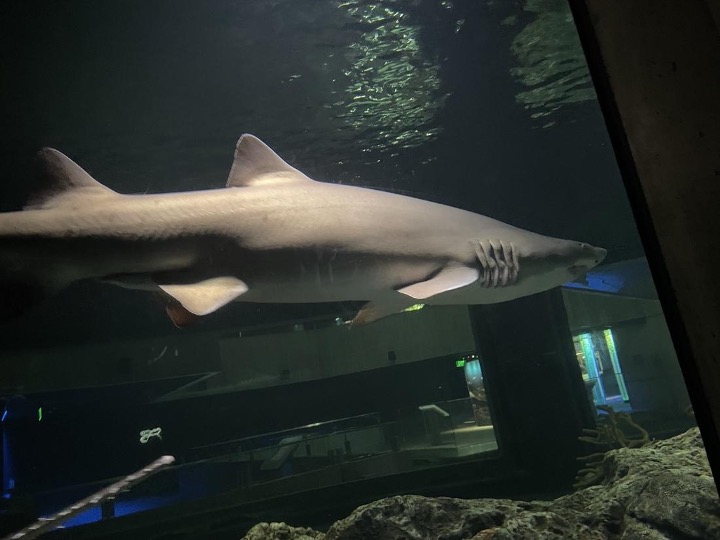Earlier this month, April Hartman ‘23, news editor at The Greyhound, interviewed Loyola’s incoming president, Terrence Sawyer. The highlights of their discussion are shared below.
Q. I’ll start from the beginning. What was your life like growing up in Wayne, New Jersey? Was education always important to you? Do you think your educational background has played a role in where you are today?
A. “Both of my parents are first-generation Americans and [they] were the first in their families to go to college. My father particularly emphasized the fact that he was, as he would say, ‘Jesuit trained,’ because he went to a Jesuit high school and then a Jesuit college. He attributed all good in his life, and therefore our life, to the fact that he was afforded a Jesuit education. And so that was ingrained in me from a young age. My mother was a nurse, [and] my father was a teacher, so we were always taught that education was the way to advance in society and to live a fulfilled life… a life where you could really think about the issues of the world, and have an informed opinion.”
“It was important in my house to have a view. You know, my father used to have this saying: ‘Stand for something, or fall for everything.’ And so, we were really encouraged to read the newspaper. He would ask us— not quiz us… it never felt aggressive or annoying, but in retrospect, he would be like, ‘What do you think about the oil crisis? What do you think about the hostages in Iran? What is your opinion?’ And I would say, ‘Well this is what I think’— I was a dopey kid— and he would be like, ‘Well why do you think that?’ and I’m like, ‘Well, I don’t know,” and he’s like, ‘Well you should find out why you have that view.’”
“We were sort of educated in our home. We didn’t realize we were in the classroom, but my dad was a teacher in our house, as well as at his school. Education was always a part of me, but it never felt like a burden. It felt like something that was to be embraced, and celebrated, and loved… to make sure that others have access to [education] is another thing that is important to me.”
Q. Speaking of education, you’ve studied at the University of Maryland College Park, Widener University Law School, and the Harvard Graduate School of Education’s Institute for Educational Management. How will this array of educational experiences contribute to your role as president of Loyola?
A. “When I look back at my education, and what was beneficial about it for me, I think about a few individual people— mentors that took interest in me, for reasons that I cannot explain, that have made all the difference. I had a mentor at the University of Maryland by the name of Dru Bagwell. He was a lawyer, but also an academic administrator. [The University of] Maryland is a huge school. It’s much harder to find mentorship there, and he explained to me what a legal education does for you… even if you end up not actually practicing traditional law. And at the time, I never thought I’d end up in higher education, but it’s sort of prophetic in a way. He talked to me about how a legal education helps you break things down to its most basic parts and figure out how they fit together. And in many ways, when you think about how a complex university comes together, those are interesting skills to have. It also creates a sort of efficiency of thought and the ability to be quick on your feet. Those are skills that I’m finding are actually quite useful in this job in just a few weeks. You get asked a lot of questions from all over the place, in all different areas, and you have to… change hats, sometimes within the hour. So, I might be in a meeting where my job primarily is to be a storyteller about Loyola, and then I have to switch hats very quickly and become a strategic planner, and then I have to become a budget manager, and then I have to become maybe a diplomat, and then I have to become a fundraiser. And so having that sort of nimbleness… has prepared me with what I think are going to be traits that will be helpful in this job.”
Q. You’ve participated in immersion experiences and pilgrimages, but you will be the university’s first layperson to serve as president. What impact will this have on your leadership compared to past presidents, and what would you say to those who question your qualifications?
A. “Well, the fact that I’m the first lay president weighs heavy on me. Not as a burden, but as a great responsibility to ensure that while I’m the president of Loyola, that we even more fully embrace our Ignatian heritage. The fact that Loyola is a Jesuit university is the primary reason why I have been here for so long. I care and believe deeply in the value and virtue of Jesuit education. I love that we— all of us, all of us sitting here today— are a part of the longest continuous educational tradition in the history of the world. That’s where you go to school, that’s where I work, and that’s pretty cool.”
“It means everything to me that we are a Jesuit university, and so as a lay leader, I want to make sure that I signal to not only our students, alumni, faculty, administrators, and staff, but [to] the Jesuit community themselves, that I am all in on ensuring that our commitment to Jesuit ideals, our Ignatian heritage, and our Jesuit charism not only survive, but thrive, under my leadership.”
Q. I’m sure you’re aware of the various student-led protests that have occurred within the past year, namely addressing sexual violence and racial injustice. In relation to these issues, some have voiced opinions about Loyola choosing another white man to be president. Do you have any plans for connecting with students about concerns and helping Loyola make real, positive progress? And how do you feel about these student-led protests?
A. “First, I absolutely intend to and have already started meeting with student groups. I met with two student groups yesterday, and I’ll be meeting with many more to really understand the feelings on the ground on the part of our students about sexual violence, about racial issues on campus, and just sort of the general culture and climate that students experience, [particularly] students from all different backgrounds and perspectives. And so, I feel very fortunate that I have some time before I actually start the job on January 1 to do some of this work and talk with students. I’m meeting them where they are and just letting them ask me what they want to ask me. And then, [I’m also asking] them about their own experiences here. So, I’ll continue to do that, and that’s not going to stop on January 1.”
“There are many demands on a university president, but I am keenly aware that being connected to our students and ultimately working on their experiences is a priority. I’ve been talking with students, and with staff, administrators, and faculty that work on these issues with students, in hopes of creating an environment that is welcoming to all, and where all student voices are heard.”
“How do I feel about protests? I think that the worst thing you can see at a college campus is apathy— when people just don’t care and they feel like, ‘Well, there’s nothing I can do,’ or, ‘I don’t know, I’m just so disinvested.’ But a protest says to me a few things. Number one, it says to me that there’s pain, and that matters to me, and that’s something I take seriously. It says to me that students really desire to be heard, and that’s also something that matters to me. And it also says that students are not apathetic. They want more for Loyola. They want Loyola to be even better, and I’m on board with that. So, I appreciate the students’ passion, commitment, and care to making not only Loyola, but ultimately the world, a better, more just place.”
Q. You led the university’s response to the COVID-19 pandemic, overseeing the planning, reopening, and operations of Loyola’s campuses. What were some difficulties you faced during this process, and were you able to take anything positive away from it?
A. “We were trying to work on a problem that had never been presented in any of our lifetimes. You know, the last thing that our world has encountered at such a global scale was probably what is known as the Spanish flu, which none of us were alive for. And while there have been some pandemics that have come up during our lifetime, never one of [this] global scale, and certainly never one that shut down Loyola. And so, trying to solve a problem that had never been addressed before was difficult, and the facts and the circumstances on the ground continued to change, so you’re really sort of chasing a moving target. That, coupled with the real, personal impact that this was having on our students, and also the people that worked here, [was a challenge].”
“It was this sort of shared impact. It wasn’t just a segment of a population… This was affecting everyone, including me. I mean, my wife works as a healthcare provider and got COVID while I was here, trying to fix and help address COVID, and it was just… it was very difficult. So, there were definitely challenges. The bigger story, I believe, will be [the] positive takeaways, which is the incredible resilience this community showed, the incredible creativity that our faculty demonstrated in how they could still deliver an educational experience to our students under less than ideal circumstances, [and] the perseverance and commitment that I saw firsthand of our staff, who put their own safety at risk to be here for our students. That’s a lot of self-sacrifice that I don’t think I’ll ever forget. We’re still not out of this. We’re not ready to spike the football. We’re still going through this, but we’ve learned a lot about the character of this community. I thought that it was pretty strong going in, but it has just affirmed my belief that this is a really special place that can accomplish anything when we put our minds together.”
Q. Enrollment numbers are slightly down compared to past years. Do you hope to see enrollment increase and do you have any plans for making that happen?
A. “Well, first, let me just put that in proper context: our enrollment numbers are down by about 1% of our goal, so that’s barely amiss during COVID. But, your question is a fair one and I want to answer it. Yes, we absolutely have plans. We believe pretty convincingly that the declines in enrollment are solely, entirely related to COVID, and that as we work [to achieve normalcy on campus, that we’re already seeing], those numbers will get back to [what they were], pre-COVID. We’re already seeing it happening. In fact, just this past Saturday, I was at an open house… in fact, I’ve done two already, [and] we didn’t do any open houses [from March of 2020 until this semester]. That’s a big part of the Loyola recruitment experience, and to not have that is a huge disadvantage. [Being] down only 1% after literally not having people visit campus in any robust way, I think, is a testament to the strength of the Loyola reputation.”
“You have to see this place to really understand its essence. I intend to be very actively involved in the recruitment of students to help tell the Loyola story. I think it’s important that parents and prospective students know that the president of the university is invested in their success and wants to be part of their life— not this sort of mystical figurehead that, you know, is never seen. That’s never been the way the Loyola presidency [has] operated. Father Linnane was very involved in the student recruitment process and [his approach was] very effective. I want to continue on that legacy and be very involved in that way.”
Q. Before you came to Loyola, you were an attorney for the Maryland Department of Business and Economic Development and practiced civil and criminal law in Baltimore City. How does your current occupation compare to previous roles, and what made you want to pursue higher education?
A. “My path to higher education is sort of interesting. While working for the state— for the Maryland Department of Business and Economic Development, which is now called the Maryland Department of Commerce— I was aware that the university was trying to buy a piece of property from the city to build a stadium on it, which is now the Ridley Athletic Complex. That project had a number of challenges— community [relationships], environmental land use… things that I had experience with while working at the state. And so, I started talking to folks here at Loyola about that project, as well as some other things that the university was trying to do. They were having some land use and community relationship issues. And, it turns out that from those conversations, I ultimately was hired here to work on those projects. And I really thought at the time— I was a young lawyer, I was like, 28 years old, I think… I thought it seemed like a cool thing to do. My wife went here. I was familiar with Loyola— I actually studied for the bar exam on this campus. And just a quick side note: the actual desk in the library where I studied for the bar exam is the same desk that I sat at when I prepared for the presidency. [At] the exact same window, that same desk is there. And if you could’ve told me then that I would be back here 25 years later, preparing every single Sunday for three months to try to become the president of Loyola, you could’ve knocked me over with a feather. Life has a funny way of doing funny things.”
“So anyway, that got me here. It was to work on those projects, to work with the neighborhood, to work with the city, [and] to create good relationships between the university and the city. When I got here, and my plan was to be here for a few years, do these projects, and go back to traditional practice of law, I absolutely fell in love with the mission, and I really started to understand first-hand what I had heard about all those years in my childhood [regarding the] importance of Jesuit education. And so, it was sort of like it came full circle.”
“It was never a plan to become the vice president for administration, or to become the VP for advancement, or to become the senior VP, and certainly not the president. The plan was just to be here, grow roots at this institution, and help in any way that I could.”
“I never set out to do those things, but I just sort of stuck around long enough where they just keep giving you stuff. And so, I know that the mindset— and I understand it— of young people today is that… they don’t stay in one place, they’re always moving around. I understand that, [but] I chose a different path. And to quote Frost, ‘it made all the difference.’”
Q. Your wife earned her master of science in speech-language pathology from Loyola. What role does this university play in your family?
A. “Huge. So, my wife got her masters in speech pathology here, [she] is still a speech pathologist, and actually worked as a clinical faculty member here at Loyola. So, Loyola is a family affair for us. My boys were essentially— I have three boys, all Jesuit educated— they all basically grew up on this campus.”
“I talk to new employees at new employee orientation… and one of the things I tell them is: ‘You have two options: you can just accept your job, come at the hours that we tell you to come, do the work that we give you to do, and you’ll be great. You’ll get good performance evaluations, and you can be here as long as you want. And your level of fulfillment, I would bet, is like… let’s call it a six. But, if you choose to get involved in things that you don’t have to do, [like] go on a retreat with students, come to a game, go to a performance, a play, come to the lectures, visit a class, drop in on CCSJ… your level of fulfillment will go from a six to a ten.’ And so, I chose to engage the university more fully, so that meant that I was here on most weekends. Not because I had to, but because I wanted to. And because I love my family, they were here, too. And so, this community has literally been a home for us. To be in this role as president and actually be moving onto the campus— we’re going to be living in the president’s house— is just an incredible gift because we’ve always viewed this place as a home. So yeah, it’s been a huge part of our life. It never felt like a job. It always felt like a vocation to me, and it still does.”
Q. You’ve been with Loyola in various positions for about 23 years now, so I think it’s fair to say you know the institution pretty well. As the president, what are your goals for this university moving forward, and how will your experiences help you reach them?
A. “The first goal is to create a shared vision for the university. You know, as president, sometimes there’s expectations that you have this plan that you’re just going to come in and implement. Maybe some presidents do that, [but] that’s not going to be my approach. I’m not short on ideas or opinions of what this place should be and the direction we should go, and I will share those when appropriate. But it’s important to me that my plan not be overly prescriptive because we have many constituencies whose voices need to be heard: faculty, students, administrators, staff, alumni, [and] community members.”
“I really want to put together an architecture that allows us to build a shared vision which will ultimately become the university’s next strategic plan. Then from that, we have to figure out: what are [the] things that people ultimately want to support and invest [in]? And then, we’ll create a comprehensive campaign, like the Bright Minds, Bold Hearts initiative, that will help fund [the campaign] and get people interested, involved, and invested in what we’re doing here at Loyola. When we do that, there’s really no limit to where we can take this university. But, it starts with conversations with the community about where we want to go, what are our hopes and dreams for this place, [and] what are the issues and challenges we need to tackle. No one person, [and] no one cabinet can do that— it requires all of us to pitch in and understand. Now, that doesn’t mean everyone gets everything that they want. There has to be a balancing out of things, but at least we can hopefully land at a place where this community cares deeply, feels invested, and sees their role in that ultimate vision that we take. That’s the first thing.”
“Secondly, I want to make sure that we embrace, as we mentioned earlier, our Ignatian heritage, including that role that the Jesuits play at Loyola. I want to make sure that we’re supporting our students. I’m fully aware that coming out of COVID is not [a situation] where you just flip a switch and go, ‘Okay it’s back to normal.’ We are collectively, as a community and as a nation, still going through some real psychological and sociological effects of this pandemic. You just don’t snap out of it, so we have to think creatively [about] how we support each other and care for each other— not just our students, but our staff, administrators, and faculty are also dealing with things that we just haven’t seen before. We have to rally around each other and support that. And then, lastly, as I mentioned earlier, a pledge and commitment to Baltimore City. We are of this city, we are for this city, and I’m anxious to talk about the ways we can really demonstrate that.”
Q. Speaking directly to the students, what do you want them to know about you?
A. “While I’m a teacher— I’m an adjunct affiliate professor in the Sellinger School— I am not, you know, considered a traditional member of our faculty. But, I do view myself as an educator, always, in all that I do. And so, what I want the students to know is that everything that we do, and why I get up everyday to come to work at this institution, is ultimately for the betterment of our students and for the success of our students. Loyola, like every institution, is imperfect, and our goal is to continue to strive, as the Jesuits say, ‘for the magis,’ [or] ‘for the more.’ And we will do that, but I take comfort in knowing that our students that invest in this educational offering graduate with incredibly bright futures because our outcomes are as good as any institution in the country. And when I say outcome, I mean what happens to you when you leave here. What are your prospects for a good life? They’re very, very high.”
“I recognize that [a positive Loyola] experience is not universally shared and enjoyed. There are some students that feel as though perhaps this place is not for them, and that cannot stand. We have to create an environment where all students feel welcomed and know that this place is for them, and it is for everyone that wants to take it. That is what Saint Ignatius would have wanted, and it’s our job to make sure that we do everything we can to make that happen. So that’s what I want students to know— and, that I’m anxious to get to know them. You know, I met with a class this morning and they were all first-years, and one of the students asked me what was one of my goals for students. I said to them my hope is that, by the time you cross the stage and I shake your hand, and you receive your diploma with my signature on it— which weighs heavy on me too— that we’ve had some type of an engagement together. That we’ve gotten to know each other a little bit over the years, [and] that I’m not just some guy you never saw before. That I’m actually in the life of our students. So, that’s what I hope. “
Q. You said you’ll be living in the president’s house. Is there a possibility we’ll see some greyhounds around campus?
A. “You will definitely see two Australian shepherds around campus because I have two of them. We will probably not get a greyhound anytime soon because we have these two dogs that are wonderful. They’re super friendly, and they love kids, and they love college students, and they miss my boys. We are big walkers with our dogs, so Annie and Clementine will be seen on campus. On leashes, because I know not everybody loves dogs, but they will be active on campus.”
The Greyhound is looking forward to following Mr. Sawyer’s presidency. Stay in the Loyola loop: keep up-to-date with us here for more university news.
Story ideas, pitches, or tips? Send them our way at greyhoundeic@gmail.com.

















































































































April Hartman • May 12, 2022 at 7:15 pm
5
Anonymous • Nov 22, 2021 at 3:49 pm
5